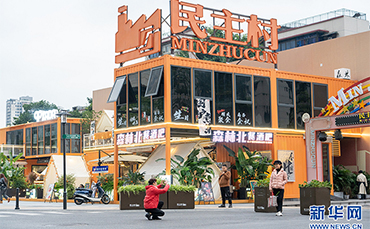


During the "double festival" (Mid-Autumn Festival and National Day) vacation in October 2023, Minzhu (Owned by People) Village (Minzhucun in Chinese pinyin) , located in Chongqing Jiulongpo District Xiejiawan Street, has become the newest "must-visit tourist attraction" for locals and visitors alike. Adorned with renewed buildings, trendy new-designed pocket parks, and Soviet-style red brick buildings with vintage glamour, Minzhu Village is where history meets fashion.
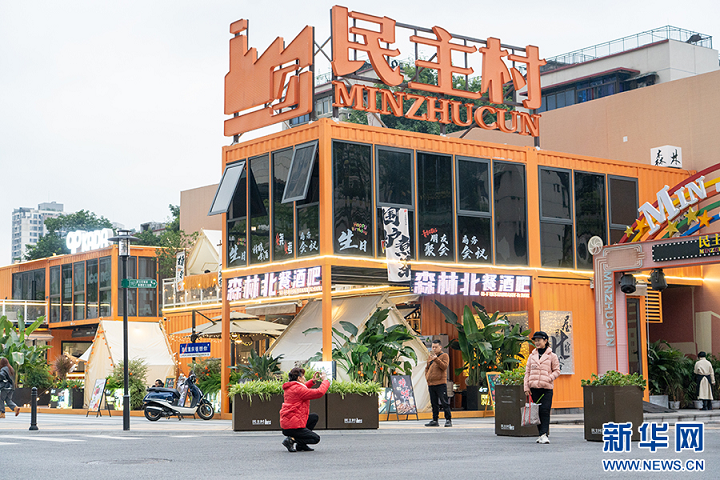
Minzhu village (Minzhucun) [photo/Xinhua]
From "Demolish" to "(Re)Design":
Minzhu Village served as the residential area for employees of Chongqing Construction Factory, following the typical 'colleagues co-working and households co-living' pattern of old communities. In recent years, with the relocation of the factory, issues such as a lack of infrastructure, disorganized urban informality, and other environmental problems emerged. "The paving stones were badly broken. When it rained, the muddy ground stuck to your feet, and the road was so narrow that it often caused traffic jams," recalled Peng Qibi, a retired worker of the Construction Factory.
In 2022, the Chongqing municipal government included urban renewal in the 'ten actions' to promote intracity collaboration between Chengdu and Chongqing. In April 2023, as the first batch of urban renewal pilot cities (districts), the Minzhu Village renovation project announced its completion after one year of efficient construction.
As the largest and most complex old district renovation project in Jiulongpo District, the program was initially slated for demolition. "After clear evaluation and thoughtful discussions, we decided to follow the four-word guideline of 'retention, redesign, rebuild, and reactivation' to cleverly foster the economic potential of the whole district through micro-renovation," said Zhou Yunjiang, chief director of Chongqing Jiulongpo Urban Renewal Construction Co., Ltd.
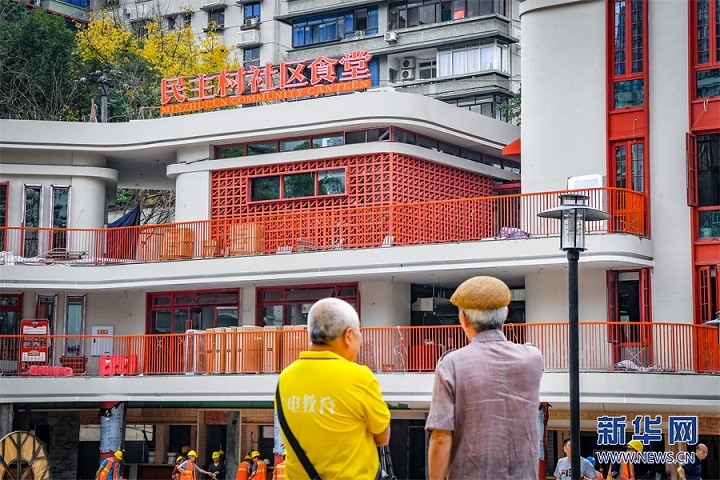
Minzhu village (Minzhucun) community canteen [photo/Xinhua]
'The village carries the warm precious memory of multiple generations. Through 'retention, redesign, rebuild, and reactivation,' we merged these cultural properties and reminiscences into the original street texture and urban facade of Minzhu Village. The old neighborhood carries the city’s rich history in its architecture as the best souvenir, and we aim to revitalize its glory,' said Ren Yushui, the main designer of the project. To better merge history with modern lifestyle, the project design team conducted a series of in-depth field studies in the community and prepared the project proposal with full respect to the residents' wishes.
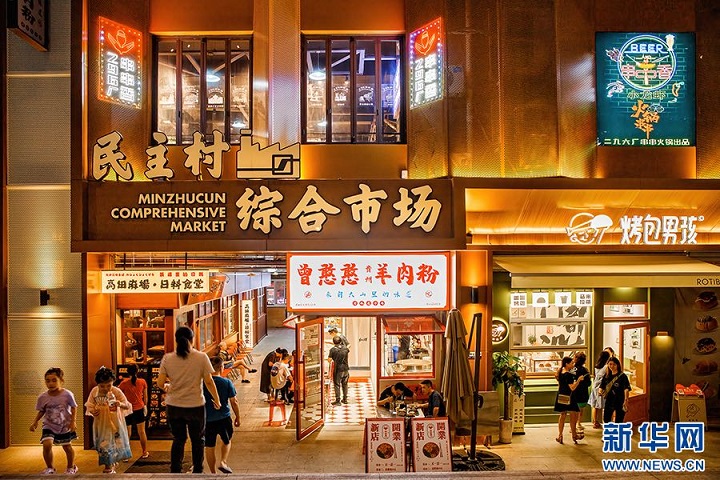
Minzhu village (Minzhucun) comprehensive market [photo/Xinhua]
Taking a Soviet-style building built in the 1950s as an example, this red brick building is a crucial node in the renewal project, carrying the collective memory of several generations of residents. After the completion of the project, a steel structure and glass were added to this 'senior' building while preserving its original brick structure. This preservation not only protects the heritage physically, but the industrial style of design also aligns with the function of the place as a former factory. By redesigning the internal space to become a community activity center and exhibition room, Minzhu Village welcomes everyone to learn about its history and culture.
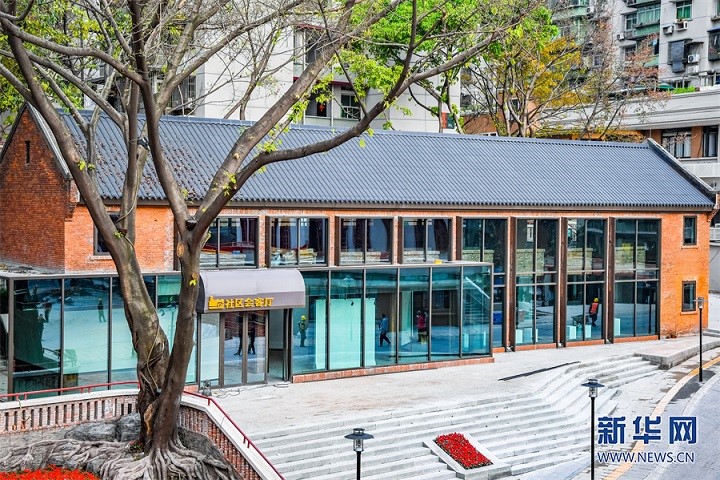
Minzhu village (Minzhucun) community reception room [photo/Xinhua]
'I feel gratified to see young people come here to learn about the history of our generation,' said Feng Zuwei, a 64-year-old resident.
Detailed design is reflected in every single architectural element. For instance, the designers used the typical grayish color of machines and steel plates as the symbolic color code of road signs and doorplates to unify aesthetics. The design team also incorporated the historical events of 'western migration (intellectuals and workers from the eastern part of China moving to western China to fight against regional disparity)' and 'redevelopment after WWII' into symbolic features in the redesigned public space. The huge slope for summertime open-air cinema, riverbanks for young children's 'natural playground,' and other public spaces with spontaneous use are all preserved as cultural realms. 'The life and character, history and memory of the city exist in every building, every street, every inch of texture,' said Ren Yushui.
Source: <https://www.planning.org.cn/news/view?id=14869&cid=12>
Translated by Xiong Yuxi